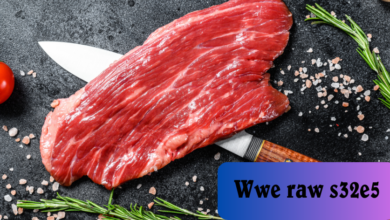Funeral Food Traditions: How Different Cultures Commemorate Loved Ones

Food plays a significant role in many life events, and funerals are no exception. Across cultures, food is used as a] means of honouring the deceased, providing comfort to the grieving, and bringing communities together in a time of loss. From symbolic dishes to post-funeral feasts, these traditions not only offer sustenance but also serve as a powerful way to remember and celebrate the lives of loved ones.
In this blog post, we’ll explore funeral food traditions from around the world, highlighting how different cultures commemorate their departed through food and what these rituals represent.
The Irish Wake: A Gathering of Remembrance
In Irish tradition, wakes are an important part of saying goodbye to the deceased. Friends and family gather at the home of the departed, where food and drink flow freely. This celebration of life includes hearty dishes like soda bread, stews, and, traditionally, a glass of whiskey or stout to toast the person’s life.
The wake is not only a time for mourning but also for storytelling, laughter, and connection. Food plays a central role in keeping mourners together and giving them the strength to continue through their grief.
Mexican Día de los Muertos: Celebrating Life with Traditional Dishes
While not strictly a funeral tradition, Mexico’s Día de los Muertos (Day of the Dead) is a vibrant and colourful celebration that honours the spirits of deceased loved ones. Families prepare altars, or “ofrendas,” adorned with candles, photos, and the favourite foods of the deceased.
One of the most symbolic foods is pan de muerto, a sweet bread decorated with bone-shaped pieces to represent the departed. Sugar skulls, tamales, and mole also feature prominently during the festivities, as these dishes are offered to the spirits and shared among the living to celebrate the cycle of life and death.
Buddhist Funerals: The Ritual of Offering Food
In many Buddhist traditions, food offerings play a key role during funerals. It is common for family members to offer rice, fruits, and other vegetarian dishes to monks in memory of the deceased. These offerings are made to accumulate merit for the departed’s next life.
After the ceremony, mourners gather to share a meal together, which is often simple and reflective of the values of compassion and non-violence central to Buddhist beliefs. Food at a Buddhist funeral is symbolic of the transience of life and the importance of compassion for all living beings.
Jewish Shiva: Comforting the Grieving with Food
In Jewish tradition, the period of mourning known as Shiva is marked by family members and friends visiting the home of the bereaved, bringing food as a way to provide comfort. During this time, it is customary for mourners to avoid cooking, so visitors bring simple, nourishing meals such as bagels, kugel (a baked noodle or potato dish), and challah bread.
Food not only nourishes the body but also brings a sense of community and support during the grieving process. The breaking of bread together fosters connection and offers solace at a time when it’s most needed.
South African Funerals: Feeding the Community
In South Africa, funeral traditions often involve large community gatherings where food is shared among family, friends, and neighbours. It is common for entire communities to contribute to the preparation of the funeral meal, cooking large quantities of traditional dishes like pap (a type of maize porridge), meat stews, and vegetables.
These meals help provide strength to the mourners and are a way of showing support for the grieving family. The act of sharing food brings people together, reminding everyone that even in times of loss, the community is united.
Filipino Funeral Feasts: A Celebration of Life
In the Philippines, funerals often involve multi-day vigils where food plays an important role in keeping mourners sustained and connected. Family and friends of the deceased often gather for a “pagsasalo-salo,” or communal feast, after the burial, where traditional dishes like lechon (roast pig), noodles, and rice are served.
Food in Filipino funerals is not only about nourishment but also about celebrating the life of the departed. It’s a time for remembering happy moments, sharing stories, and supporting one another through the grieving process.
Chinese Funerals: Honouring Ancestors Through Food
In Chinese culture, food offerings are made to honour both the deceased and their ancestors. Dishes such as rice, fruit, and meat are placed in front of the coffin or altar as a mark of respect. After the funeral, a communal meal is shared among the mourners, often including dishes that symbolise good fortune and prosperity, such as dumplings or noodles.
These meals help to support the grieving family and ensure the deceased’s journey into the afterlife is blessed. Additionally, food offerings may continue on special days, such as the Qingming Festival (Tomb-Sweeping Day), to honour the spirits of ancestors.
How Food Brings Us Together in Times of Grief
Food has the power to transcend language and cultural barriers, offering comfort and connection in times of sorrow. Funeral food traditions provide an opportunity for people to come together, share stories, and find solace in the presence of others.
Whether it’s a simple meal shared with close family or a large feast that unites a community, food is an integral part of how we honour the lives of our loved ones. For those seeking a modest and intimate farewell for their loved ones, a simple funeral can still offer the same sense of connection and respect, with a focus on what truly matters—honouring the life lived.
Bon Appetit!
From Mexico to South Africa, the role of food in funerals reflects the values of different cultures and offers a tangible way to navigate the grieving process. Whether through symbolic dishes or large community meals, food brings comfort and unites people during one of life’s most difficult times. It reminds us that even in grief, we are never alone.

